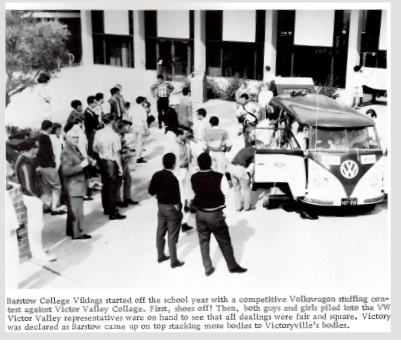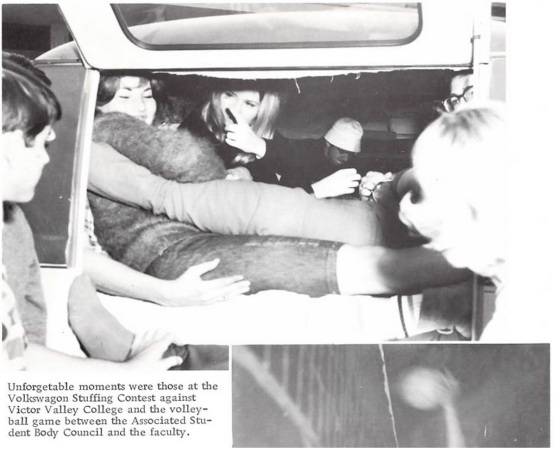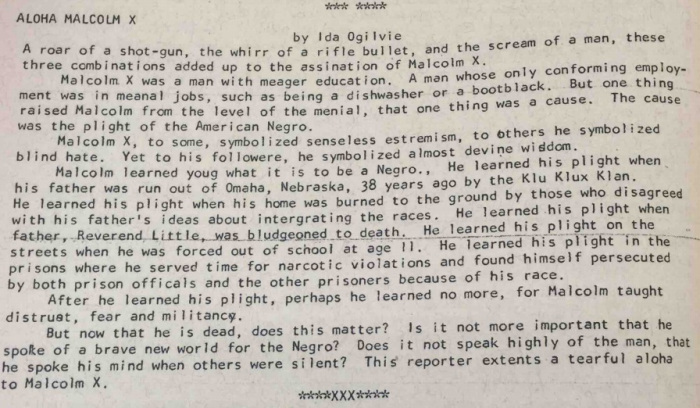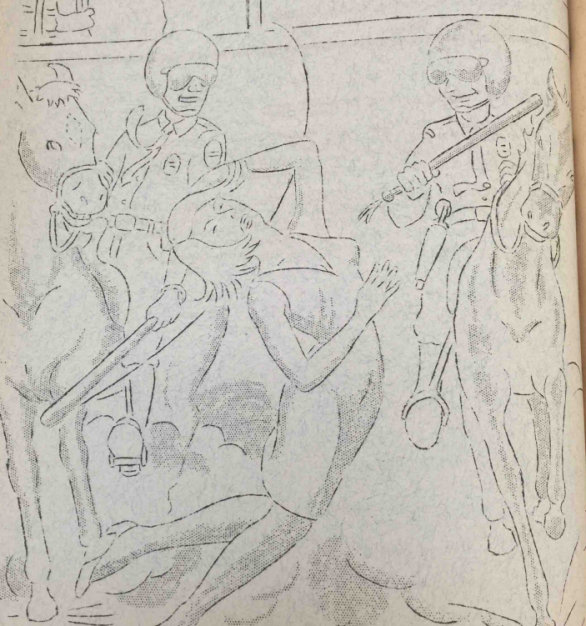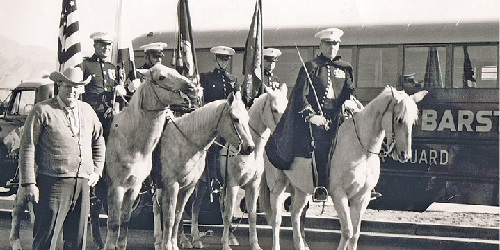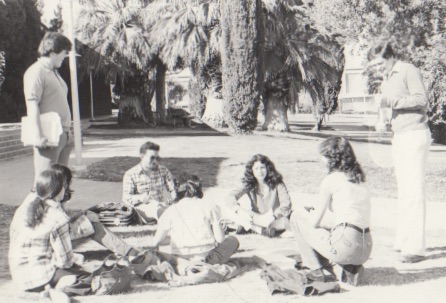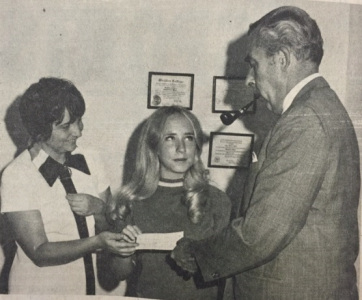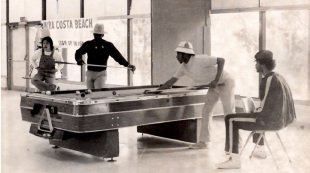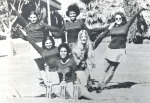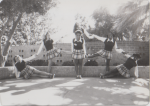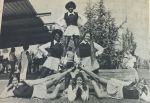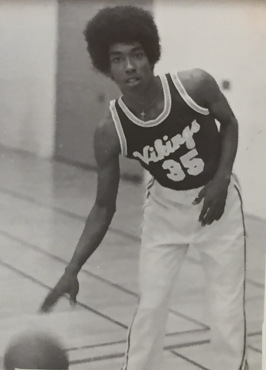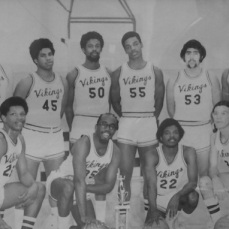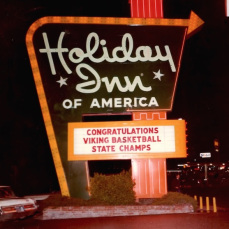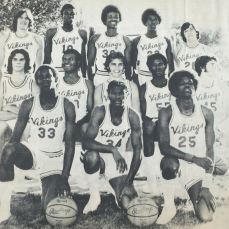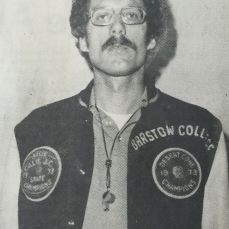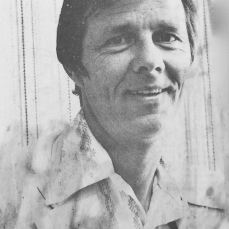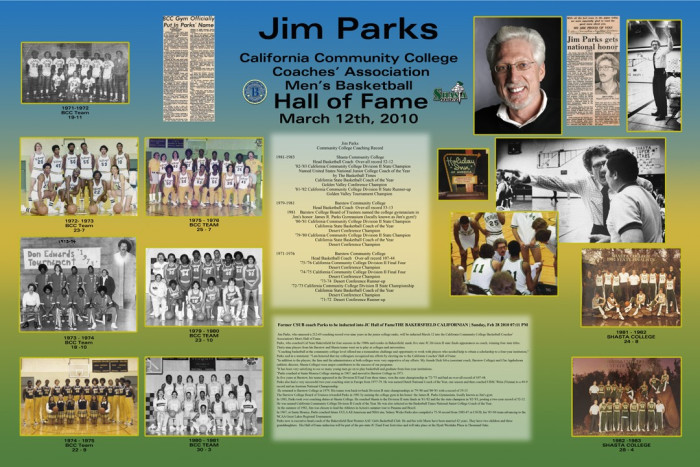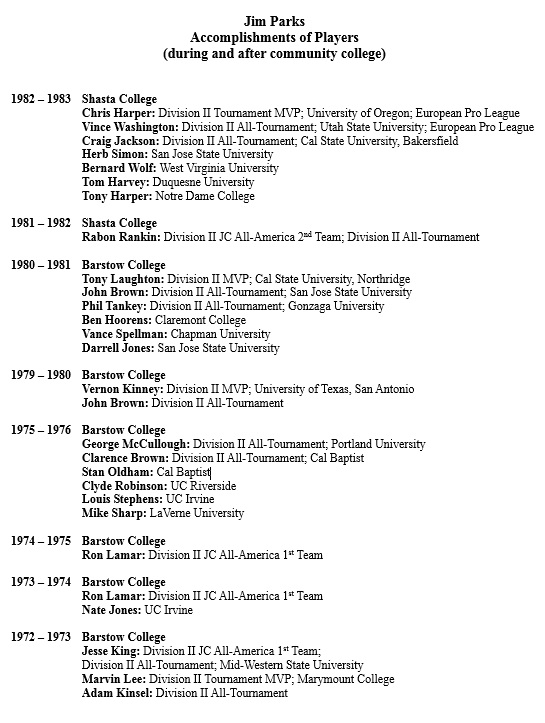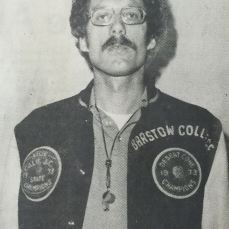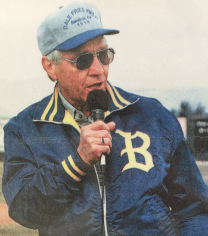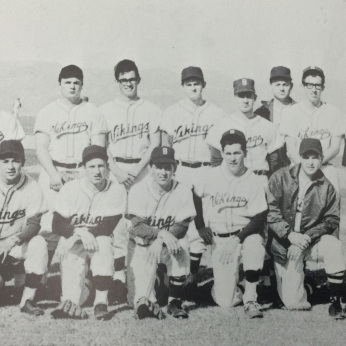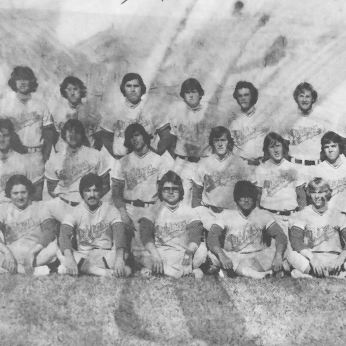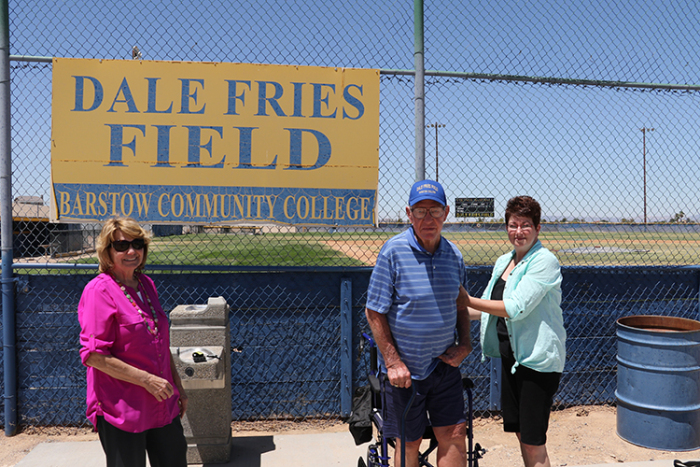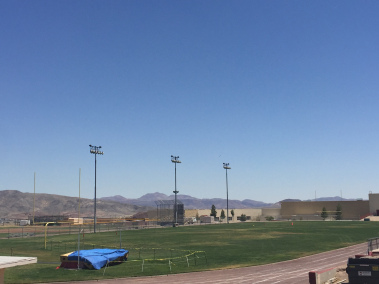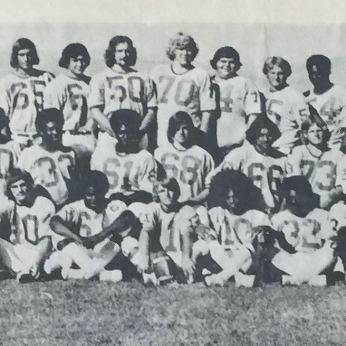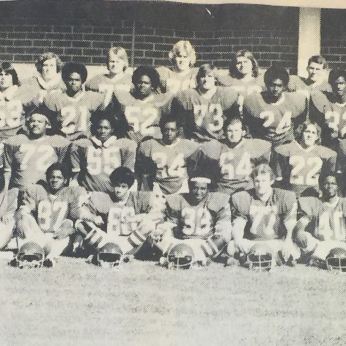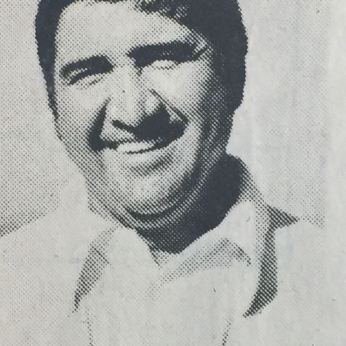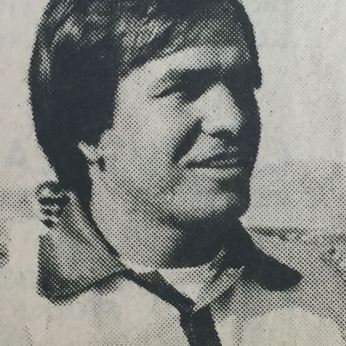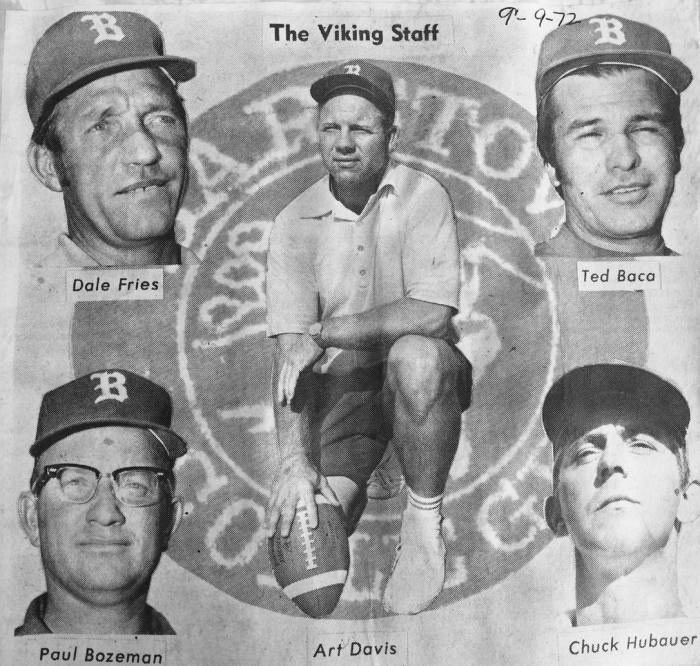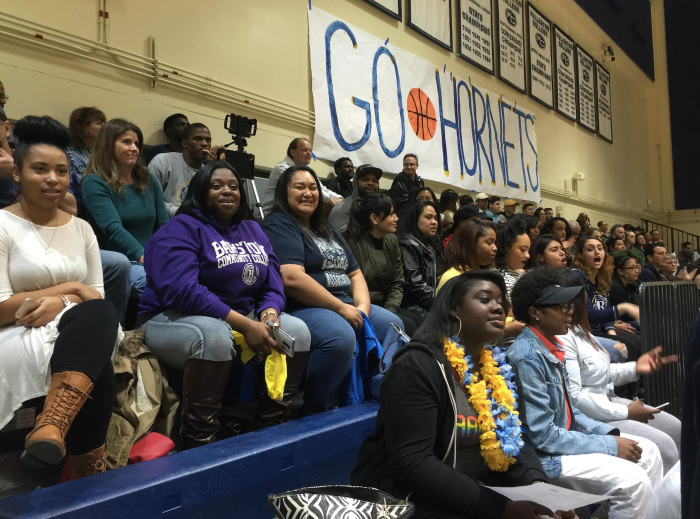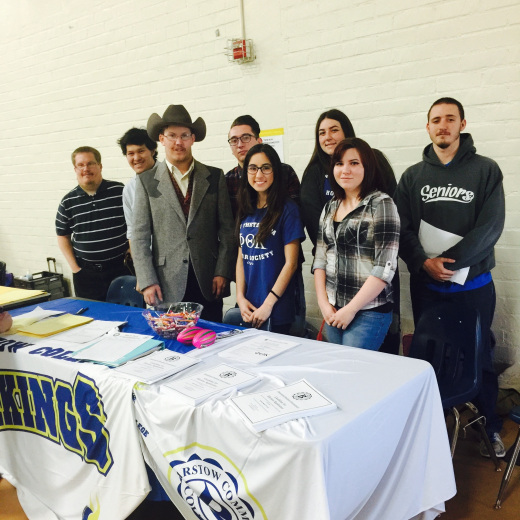Student Life
From the beginning of Barstow College, students enjoyed active and enriching activities promoting leadership, academics, good citizenship, and fun. Involvement in student government and a variety of student clubs, dances, guest speaker lectures, and special events offered students the complete collegiate experience. Events ranged from the serious–like viewing Shakespearean plays, discussing politics, civil rights, and Vietnam, and participating in science fairs; to the silly– like Volkswagen stuffing contests, tricycle races and beard-growing “Sampson” contests.
Events included the first college Autumn Dance in 1960 and the first Spring Ball. The Spring Ball’s theme was “Chinese New Year.” It was held on March 25, 1961, at Garver Memorial Auditorium in Barstow. Advance tickets were sold for $2,50 for a “couple,” and $1.75 “stag.” Local businesses including Raiser’s Dress Shop, McQueen’s Shoe Store, Rude Department Store: A Marrs, Templow Drugs, Barstow Furniture, and KIOT Radio offered prizes and support for the affair. The students developed their own newspaper, The Roadrunner. In 1965, students initiated the publication of the annual, Barstow College Yearbook. Students were encouraged to contribute the annual by ads and editorials in the Roadrunner. “Do you occasionally feel the urge to write,” Yearbook staffer Ed Burgess announced? “When you do, give in…You may be published in our Yearbook…also, [help us] find a name for your Barstow College Yearbook. If your submission is chosen, you will receive a free yearbook.” (Roadrunner, Feb. 16, 1965)
Students utilized the local radio KWTC station for student shows, news, and broadcasts. The program, called, The College Hour, aired every Wednesday at 7 p.m.
Student concerts, college news, and special interviews were presented. Various communications and production students ran the program every semester.
Barstow College joined with Victor Valley College in social events such as the popular musical happenings of the 1960s, “Hootenannies,” which were live folk music get-togethers. Folk music and folk rock were popular on American college campuses in the 1960s and Barstow College was no exception.
Students competed together with intramural sports of golf, soccer, volleyball, basketball, roller skating, football, and other contests in addition to college-sponsored teams.
Students in various academic and career programs attended numerous lectures by invited guest speakers. On May 24, 1961, students in the school’s inaugural Apprentice Programs met with Army Commanding General George H. Cloud and Chief of Staff Col. Elliott B. Robertson. The program was a four-year apprenticeship that trained students in careers and on-the-job training for fields including air conditioning and refrigeration, electronics mechanics and maintenance, and machinist and electrical work. Students received an Associate of Science degree upon completion of the program. Fourteen students were the first in the program. Their instructors were Eldon Roth and Robert Vencill.
Other first-decade speakers included: NBC News Analyst Martin Agronski, internationally acclaimed wildlife photographer Dr. Alfred M. Bailey; NASA scientists, USGS Geologists, and famous anthropologist Louis Leakey.
Wildlife cinematographer Ty Hotchkiss presented films about wilderness areas of the United States and other distinguished speakers.
By 1963 an additional feature was added to informative lectures–students could sign up for overnight outdoor adventures with guest speakers on the college Safari. The college Safari consisted of hands-on traveling lecture tours of various geological features and archaeological and cultural sites in the Mojave Desert.
The 1965 Safari expedition was led by anthropologist Dran Brody. He led students to Mojave fossil beds, Second Summit, Superior Dry Lake, and Description Canyon. Description Canyon is home to hundreds of ancient petroglyphs. He also showed students flint-knapping–the art of making projective points in the ancient ways of early humans. He lectured about the Shoshonean-speaking peoples of the Great Basin and the Mojave Desert. (Roadrunner, May 18, 1965)
Students and American Politics in the 1960’s
The 1960s were a raucous decade in America. The security of 1950s society with bobby socks, poodle skirts, and leather jackets gave way to an era of assassinations, the Cold War, beatniks, hippies, civil strife, and Moonwalks. Concurrently, the troubled time was an era of Renaissance, with outstanding music, art, and progressive struggles for political, ethnic, and economic equality. Students at Barstow College reflected on what was happening in the United States. Marches in support of civil rights, and outrage over the murders of John F. Kennedy, Malcolm X., Martin Luther King, Jr., and Robert Kennedy, all were noticed. Students voiced their concerns throughout the decade. Much of student activity was documented in the college paper, The Roadrunner. Some excerpts from thoughtful student writers follow.
Regarding the murder of Black rights activist Malcolm X, student reporter Ida Ogilvie wrote:
“Aloha Malcolm X”
A roar of a shotgun, the whirr [sp] of a rifle bullet, and the scream of a man, these three combinations add up to the assassination of Malcolm X…
Malcolm X was a man with meager education. A man whose only conforming employment was in menial jobs…But one thing raised Malcolm from the level of the menial, that one thing was a cause. The cause was the plight of the American Negro.
Malcolm X to some, symbolized senseless extremism; to others, he symbolized blind hate. Yet to his followers, he symbolized almost divine wisdom…[Malcolm envisioned] a brave new world for the Negro. Does it not speak highly of the man that he spoke his mind when others were silent? This reporter extends a tearful aloha to Malcolm X. (Roadrunner, Feb. 24, 1965)
“Aloha, Malcolm” from the Barstow College school newspaper, The Roadrunner, February 24, 1965
Civil Rights political drawing from the Roadrunner, 1965
In related civil rights matters, students were concerned about the violence revolving around integration in the Deep South. When Alabama Governor George Wallace swore to uphold, “Segregation, now… segregation forever,” Barstow students responded with a series of political cartoons and editorials. On March 16, 1965, members of the college history club met to discuss civil rights and the problems in Alabama “The literacy test, segregation, integration march on the Capitol, and everything else going on,” were points of concern to the students. “Alabama was served on the rocks today,” quipped one student. (Roadrunner, March 16, 1965)
Vietnam
USMC Mounted Color Guard was developed during Vietnam Era at Yermo base. Palomino Mustangs are adopted from wild herds trained in Nevada and enter into USMC service for 20 years. Barstow is the last remaining marine-mounted unit. USMC link: http://www.mclbbarstow.marines.mil/Agencies/MountedColorGuard.aspx
American involvement and military escalation in Vietnam were a point of deep concern for Barstow students. Many students were active military or had served in the military. Some students supported the war, expressing concerns about communist expansion and the Domino Theory in Southeast Asia. Other students opposed American involvement. The student paper published an editorial entitled, “Viet Nam Scares Me or Bombshelter, Sweet Bombshelter.” The author, “TR” wrote that at first he didn’t pay much attention to the problems in Vietnam, but with American escalation and underlying nuclear threat in the Cold War, he was investing in a bomb shelter. “My fortified home would be large, spacious and air-conditioned….Here I could live without having to worry about Viet Nam.” (Roadrunner, April 6, 1965)
“Our students were as involved in various movements as every other campus,” physics instructor Jim Rowan explained. “They were a very lively and committed group.”
1970’s Student Life
Student life on the Barstow college campus was amazingly calm considering the political swirls and upheavals of 1970s America. Students were aware of the Vietnam War, but few protested for or against the United States' involvement in Southeast Asia. Students studied and completed their courses. A variety of student clubs and interesting elective courses like Equine Studies, Airplane Flying, and Pilot Certification kept students interested and absorbed in campus activities. The school’s nursing program blossomed.
Student clubs like the Cheerleaders and the Debate Club offered dances and social activities. Outstanding student journalists like Kathy Knowles received a $150 Press Club scholarship. The adventurous Mojave Safari continued its excursions and expeditions throughout the High Desert. Internationally known groups like the Boys Town Choir traveled to Barstow at college invitation. Stimulating lecturers presented information on campus. Among these were Norman Baher, a captain with Thor Heyerdahl’s Ra Expedition; representatives of the Audubon Society, who presented lectures and films about American and Canadian wildlife, including the films, “Mule Deer Country,” “British Columbia: Mountains to the Sea,” & “The Beaver Pond.”
The college continued regional cultural enrichment by bringing in outstanding international artists like Spanish Flamenco guitar virtuoso Carlos Montoya in October 1976. 1970s summer concerts included violinist and piano duo Lincoln Mayorga and Judy Ostler, who performed pieces by Mozart, Beethoven, and Prokofiev.
Students also brought the advice columnist Abigail Van Buren to campus at a cost of $2,250 plus travel and hotel expenses. Two board members objected to the cost, but the students and the majority of trustees supported the presentation and the expense.
In 1970 Bob Showboat Hall and several other members of the Harlem Globetrotters came to the campus. (March 28, 1970)
TV Personalities such as Leonard Nimoy, also known as TV’s Mr. Spock from Star Trek, came to the campus and did a free lecture about Science Fiction. (October 14, 1975).
“Live Long and Prosper.” – SPOCK
During the 1975-1975 school year, the college adopted the federal work-study program. Barstow College received $22,051 in federal funds to support student workers in the program. In its initial year, 45 Barstow students earned needed funds through the federal program.
Remodeled Student Center
In September 1970, the doors opened on a fully remodeled Student Center. Students enjoyed meeting and relaxing in the center, which came complete with billiards tables and comfortable chairs and couches, and a snack bar.
College survey leads to drug education
In November 1976, as a result of a campus-wide survey of students and faculty, the college decided to incorporate a drug education and information program. Students could take classes in drug education and a series of seminars open to students and the public were developed and offered on campus.
With the assistance of Municipal Judge Ted DeBord and the county probation office, as a result of the student survey it was demonstrated that most students and faculty wanted college resources applied to drug education and steps to avoid drug abuse.
“The report concluded that widespread involvement of students with drugs had a major impact on campuses in the mid-Sixties.’ it was revealed. “But there still exists a clear and present need for new and better methods of providing information to students and communities. (Dispatch, Nov. 15, 1976)
The report recommended peer counseling, professional outreach, and community education as well as for-credit education about drugs. The school implemented the recommended program.
Student Body President Scandal
An unfortunate and embarrassing episode in Barstow's student history happened in 1970. Associated Student Body President Nehemiah Jackson was forcibly removed from office by the college administration. According to Dean of Students Robert Chamberlain, Jackson had “repeatedly violated rules.” Jackson was warned about bad behavior and suspended before being forcibly removed from office and asked to resign. “Jackson got into hot water with the administration on August 9, 1970, when he…signed for a district-owned can for a trip to College of the Desert in Palm Springs…but managed to include a side-trip to Los Angeles on the same junket and logged in a reported 923 miles on the car,” according to a report in the Desert Dispatch.
In a separate incident, Jackson took another district car for a meeting with the state-wide Junior College Government Association. Apparently, he never arrived for the appointment. This further upset the school administration. Jackson admitted that he never arrived for the appointment, but said that Dean Chamberlain and the administration were being “paranoid.”
According to Dean Chamberlain and others, Jackson persisted in taking trips with district vehicles. He was ordered to present himself at a disciplinary hearing before the college board in September 1970 but failed to appear. He was ordered to refrain from student government activities for 60 days. He continued to attend local and statewide meetings. Jackson maintained, “Every student has the right to go to meetings.”
Finally, after Jackson participated in a state-wide meeting where Jackson addressed the session while under suspension, the Dean and the college board decided he would be removed and asked for his resignation. Jackson said he was outraged by his forced removal. “If any charges on me warranted being suspended from ASB, then the people who elected me should have been the hangman,” Jackson maintained. (Dispatch, 11/23, 1970).
Basketball and Baseball were the first sports offered at the new Junior college. Practices and games were held at Langworthy Field as the college occupied the east corner of the Barstow High School campus. According to the 1963 Viking Voice, the following sports would be running: “basketball, baseball – and if enough students are interested soccer, bowling, golf, tennis, and bowling.”
A more diverse array of sports were offered by the college in the 1970s and included: Archery, Badminton, Bowling, Fencing, Golf, Gymnastics, Jogging, Modern Dance (Beginning-Intermediate and Advanced), Swimming, Soccer, Softball, Tennis, Trampoline, Volleyball, Baseball, Bicycling, and Yoga, Body Contouring (Women Only), Body Building (Men Only)
Classes on Football, Baseball, and Basketball theory were also taught.
All of these courses continue into the 1980s.
In the 1980s programs such as Fencing were phased out just as new programs such as flag football, racquetball, kung fu, and self-defense were added.
The 1960s: Barstow College is a member of the Desert Conference which includes Palo Verde College (Blythe), Victor Valley College (Victorville), and College of the Desert (Palm Desert). (Catalog, 1962)
The 1970s- 1980s: Barstow College is a member of the Inland Valley Conference which includes Chaffey College, Cerro Coso College, Citrus Colleges, East Los Angeles College, Glendale College, Rio Hondo College, Riverside City College, San Bernardino Valley College, Mount San Jacinto, and Victor Valley College.
1971 Conference Champions
1973 California Division II State Basketball Champions!!
1974 Conference Champions, State Runner-Up to Merced Blue Devils
1975 Made it to State Championships
1976-1977 Season: Men’s Basketball division champions
1979-1980 Season: Men’s Basketball State Champions!
Leadership under coach Jim Parks
Barstow won back-to-back Division II State Championships in ’79-’80 and ’80-’81 with a record of 53-13. The Barstow College Board of Trustees rewarded coach Jim Parks in 1981 by naming the college gym in his honor: the James R. Parks Gymnasium; locally known as Jim’s gym!
Jim Parks
Santa Monica College, Barstow College, Shasta College
The game of basketball has provided Jim Parks with the opportunity to coach at every level and to travel, and live in, many countries. During his career, he has served as head coach in several Los Angeles high schools, assistant and head coach in California community colleges, a head coach at the California university level, a youth development director in two European countries, and a head coach in several European professional leagues and the Southern California professional NBA Summer League.
In 1967, Jim became the Assistant Basketball Coach at Santa Monica College where he had the opportunity to coach future UCLA All-American, Sidney Wicks. In 1971, he became the Head Coach at Barstow Community College. In five years at Barstow, Jim’s teams appeared in Division II Final Four three times, won the State championship in ’72-’73, and had an overall record of 107-44.
From 1977-1979, Parks moved to Europe to coach at the international level. As Head Coach of Nationale-Nederlanden Donar, his team posted an overall record of 40-16 and was runner-up in the Dutch 1st League. The team was invited to Israel to play the premier international team, Macabee Tel Aviv, who went on to defeat that year’s NBA champion. Jim was named Dutch National Coach of the Year. The following season, he coached UBSC Wein (Vienna) to a 49-9 record and an Austrian National Championship. The team advanced to the European Cup Championships defeating the champions from Portugal and England in the qualifying rounds before losing in the final pool to Spain, Italy, and Yugoslavia.
After returning to Barstow College in 1979, Jim’s teams won back-to-back Division II State Championships in ’79-’80 and ’80-’81 with a record of 53-13. The Barstow College Board of Trustees rewarded Parks in 1981 by naming the college gym in his honor: the James R. Parks Gymnasium; locally known as Jim’s gym!
In 1981, Jim accepted the head coaching position at Shasta College. His success followed him as he coached Shasta to the Division II State Finals in ’81-’82 and the State Championship in ’82-’83, posting a two-year record of 52-12. Parks was named California Community College Division II Coach of the Year. He was also selected as National Junior College Coach of the Year by the Basketball Times. In the summer of 1982, Jim was chosen to lead the Athletes in Action’s summer tour to Panama and Brazil.
In 1983, Parks was named Head Coach at California State University, Bakersfield. His four-year record there was 75-36 and in ’83-’84 the team advanced to the NCAA Great Lakes Regional Tournament.
In nine years as a Head Coach at the California Community College level, Jim’s teams had a 212-69 record, made five Division II State Finals appearances, and won four State Championships. Thirty-nine players from Barstow and Shasta went on to play at colleges and universities.
Jim now resides in Bakersfield where he serves as Executive Head Coach of the Bakersfield Heat Premier AAU Girls’ Basketball Club. He and his wife Marie have been married for 42 years. They have two children and three granddaughters.
Desert Conference Champions 1974
California Junior College Runner Ups 1974
“I got players from out of state and I got kids from the high schools. We offered them a good program and an opportunity to play baseball,” Fries said. “We were known throughout the state of California for baseball. We played in all the big schools. We played Long Beach, Chaffey, San Bernardino, and Citrus. We didn’t back off from anybody.” Coach Dale Fries, August 11, 2016 Interview
“I had a bunch of good kids. All have been successful in life. I thought that was the most important. Every baseball player, maybe with the exception of one or two, graduated and was very successful in life. “
Sep 2016: President Deborah DiThomas with Coach Dale Fries
While The Barstow Community College Football team never won any championships in its decade-long existence, the football team had many big wins and shutouts, especially against their rival… Victor Valley College. Sadly as a result of state education budget cuts the football team was eliminated in 1978.
Notable games:
9-21-1975, Opening of the 1975 season against Pomona-Pitzer 27-10.
9-10-1977, Vikings vs. Marines at Sorenson Field. 4-0 Vikings win. The first game of the season. Barstow College played many games against their Barstow neighbor the Marines serving at the Logistics Base.
9-16-1977, 20-7 Barstow stomps Pomona-Pitzer.
10-8, 1977, “Barstow puts an end to the rumor they cant play Football, they played the Victor Valley Rams and turned them into goats, 33-7!” (Blendon Beardsley, Jr. Desert Dispatch, Oct 11, 1977).
10-21-1977, Vikings smash La Verne 40-0.
10-29-1977, 22-14 Win over Cal Poly Pomona, sixth win for the year.
August –September 1978 The Loss of the Football Team
Football dropped at Barstow College (Desert Dispatch August 17, 1978) indecision over the effect of Proposition 13 and the Jarvis-Gann initiative. Coach Al Canizales had already decided to cancel the Football program after only eight to 10 students showed up to tryouts. (Sun Telegram, Aug 19, 1978)
“I guess it’s a combination of things,” said athletic director Ted Baca mentioning the lack of participation. (Sun Telegram, Aug 19, 1978).
In an interview held in May 2016, Mr. Baca elaborated on the loss of the Football Team in the 1970s:” It was a real challenge to come up with a [football] team… As a small college we held our own”, Baca explained, “But we were competing with colleges from major urban areas like Costa Mesa and Orange County. We had a smaller talent pool in Barstow and had to recruit from outside the community.”
Baca explained that “The state of California has a history of ups and downs economically and by the 1970s, we suffered extreme cutbacks… the football team was out in part as a result of this.. once it was out it was out forever. ” – Ted Baca, 2016.
Student Life the 2010s

